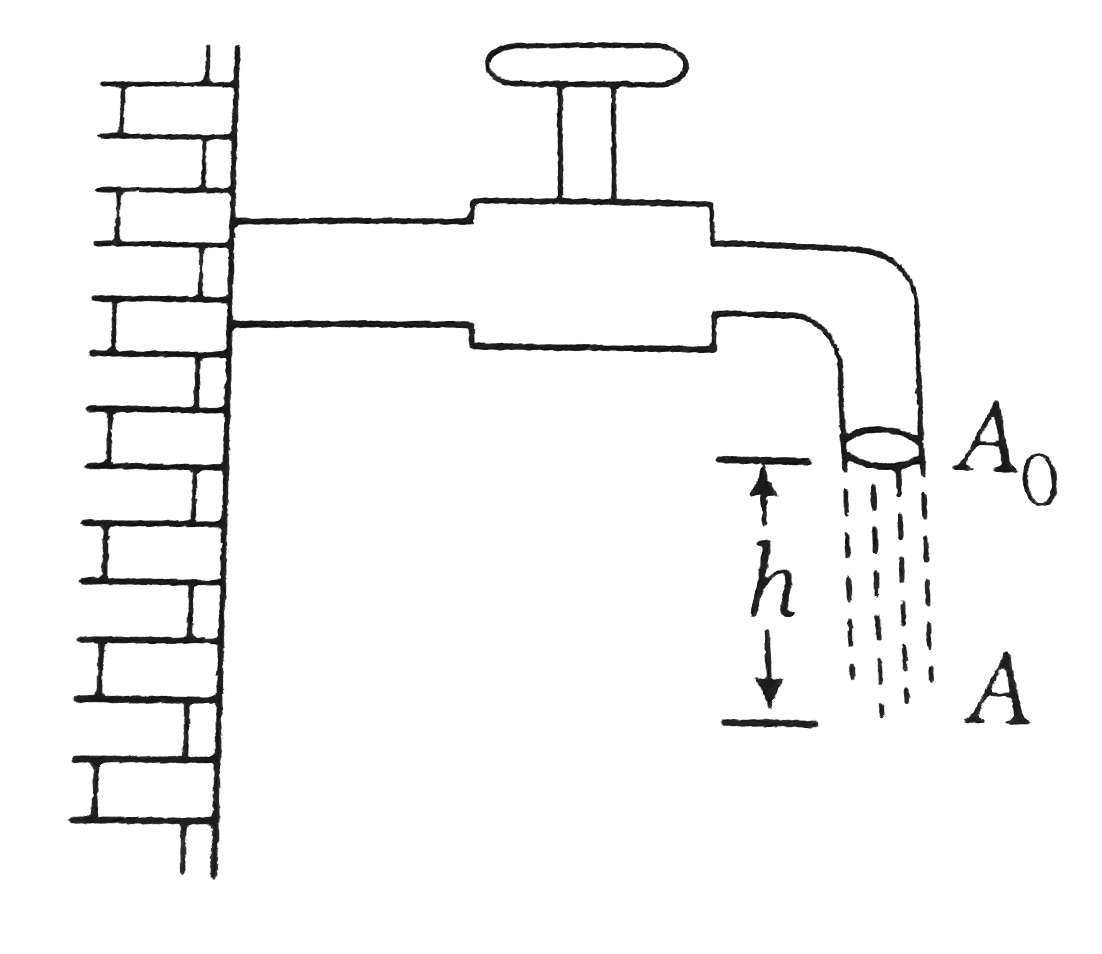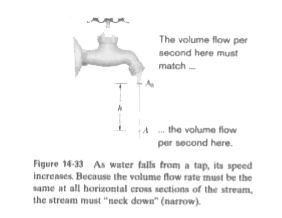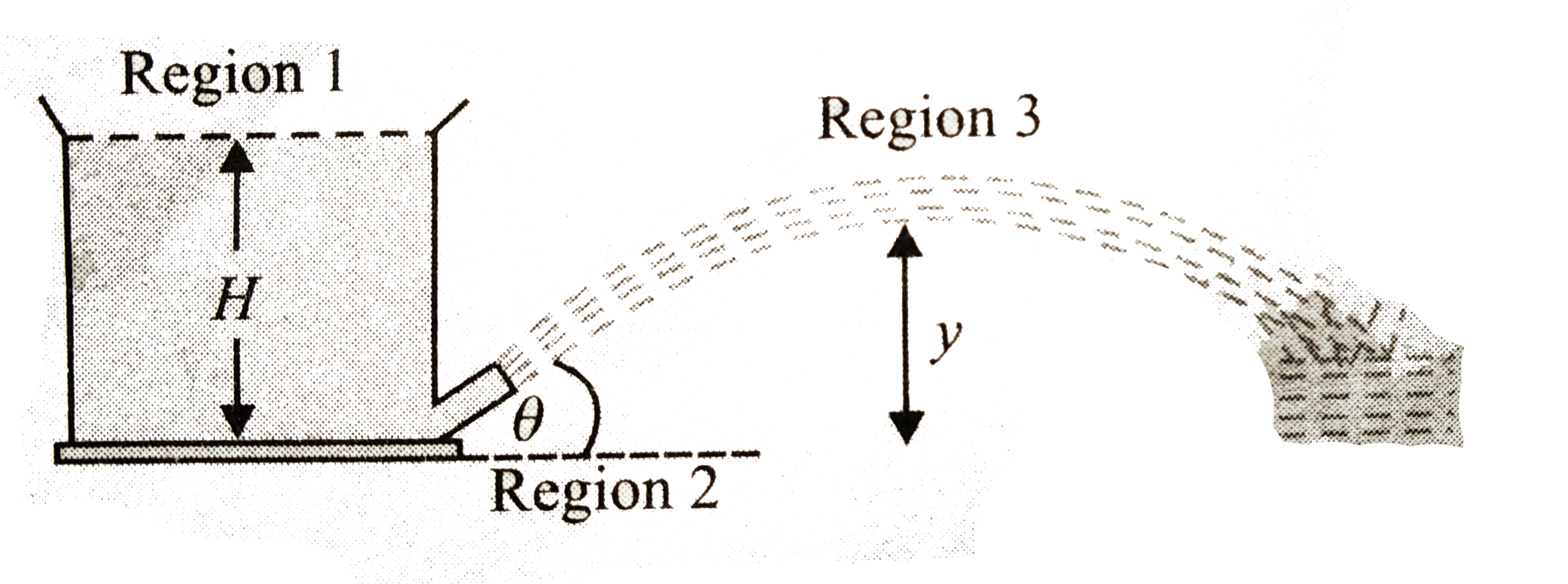Figure shows how the stream of water emerging from a faucet necks donw as it falls. The area changes from A0 to A through a fall of h. At what rate does the water flow from the tap ?

A0√2ghA2A20−A2
2A0√ghA2A20−A2
A0√gh2
2A ⎷ghA20A20−A2
The correct Answer is:A
As,A0v0=Av⇒v2=v20+2gh
⇒v0=√2ghA2A20−A2 orR=A0v0=A0√2ghA2A20−A2
Topper's Solved these Questions
- FLUID MECHANICSBOOK - DC PANDEYCHAPTER - FLUID MECHANICSEXERCISE - B) Medical entrance special format question
19 Videos
- FLUID MECHANICSBOOK - DC PANDEYCHAPTER - FLUID MECHANICSEXERCISE - Match the columns
6 Videos
- FLUID MECHANICSBOOK - DC PANDEYCHAPTER - FLUID MECHANICSEXERCISE - Check point 13.4
10 Videos
- EXPERIMENTSBOOK - DC PANDEYCHAPTER - EXPERIMENTSEXERCISE - Subjective
15 Videos
- GENERAL PHYSICSBOOK - DC PANDEYCHAPTER - GENERAL PHYSICSEXERCISE - INTEGER_TYPE
2 Videos
Similar Questions
Why does a stream of water from a faucet become narrow as it falls?
View SolutionFig shows how the stream of water emerging from a faucet "necks down" as it falls . This change in the horizontal cross- sectional area is characteristic of any laminar (nonturbulant) falling stream because the gravitational force increases the speed of the stream . Here the indicated cross-sectional areas are A0=1.2cm2 and A=0.35cm2 . The two levels are separated by a vertical distance h = 45 mm . What is the volume flow rate from the tap ?

View Solution
Knowledge Check
Statement-1: The stream of water emerging from a wate tap "necks down" as it falls.
Statement-2: The volume flow rate at different levels is same.AStatement-1, is true, Statement-2 is true, Statement-2 is correct explanation for statement-1BStatement-1 is true, statement-2 is true, statement-2 is NOT a correct explantion for statement-1Cstatement-1 is true, statement-2 is falseDstatement-1 is false statement-2 is trueWater falls from a top down the streamline,
Aarea decreasesBarea increasesCvelocity remains sameDarea remains sameA small iron ball falls from rest through a large height h into a water column, the final velocity
ADoes not depend on hBIs proportional to √hCIs uniformDAll these statements are not correct
Figure shows a stream of fluid emerging from a tube in the base of an open tank. Obtain an expression for 'y' in terms of θ and 'h'. Can exceed 'h'?

View SolutionThe energy obtained from hot water fall is known as
View SolutionWater falls from a top, down the streamline
View SolutionWhen water is heated from 0∘C→20∘C,how does its volume change
View SolutionThe height of the water in a tank is H. The range of the liquid emerging out from a hole in the wall of the tank at a depth 3H4 from the upper surface of water, will be
View Solution
